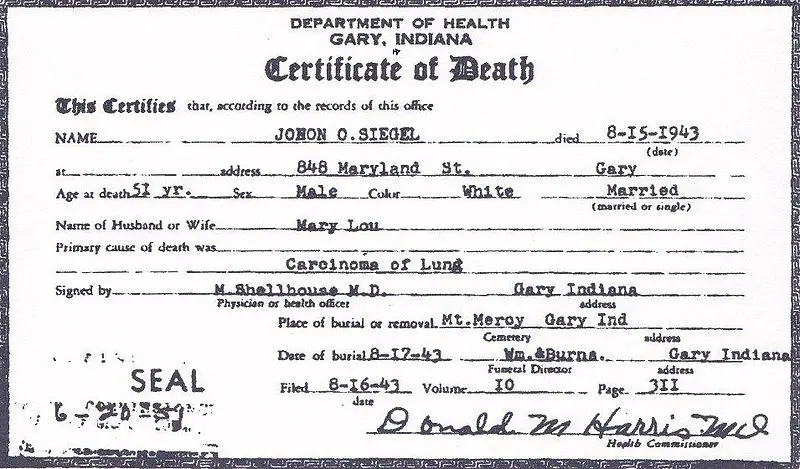For decades now, many scientists have been raising red flags that chemotherapy can oftentimes do more harm than good, and in a surprisingly large number of cases, it simply does not work.
Dr. Hardin B. Jones, a former Professor of Medical Physics and Physiology at Berkeley, California, studied the impact of chemotherapy, radiation, and surgery on the survival rates of cancer patients, and found that instead of prolonging lives, these treatments actually make the patients die almost four times sooner. This was found more than 40 years ago, and yet not much has changed in the way the hospitals treat cancer.
For terminal patients as well, a recent 2016 study in the peer-reviewed journal of the American Cancer Society CANCER found that living at home instead of being treated at the hospital prolonged their lives by about 45%.
And now, a new study was just published earlier this month that analyzed 30-day mortality rates caused by the treatment itself: chemotherapy and chemotherapy plus radiation.
Study: Early Mortality Rate Caused by Chemotherapy
The study, published in The Lancet’s Oncology, looked at 23,228 breast and 9,634 lung cancer patients in England.
The results showed high death rates linked to the treatment, increased use of SACTs (systematic anticancer therapies – cytotoxic chemotherapy). The researchers stated it was due “poor clinical decision making.”
“Patients dying within 30 days after beginning treatment with SACT are unlikely to have gained the survival or palliative benefits of the treatment, and in view of the side-effects sometimes caused by SACT, are more likely to have suffered harm,” states the study.
The researchers write that while there a few patients who may have benefited from SACTs, there were too many who were harmed by it, or even killed by the treatment.

Chemotherapy is toxic, and new research points out to just how many patients die from it in the first 30 days of treatment.
In 2014 , the year the study was researched, almost 1,400 patients in England died within 30 days of their first chemotherapy treatment. In some hospitals, the mortality rate was significantly higher than in the others: up to 51% of breast cancer patients died in Milton Keynes (although the number of total patients was small), and up to 29% of lung cancer patients died in Lancashire Teaching Hospitals.
“Simply reducing doses of or avoiding SACT altogether would reduce or eliminate instances of treatment-related early mortality.”
The study was done after noticing a clear lack of data analyzing the risk versus gain of using chemotherapy and mortality rates caused by it in the first 30 days of treatment. As the researchers state, this is the first time this topic has been brought up and investigated at a national level.
The “million dollar questions” (or perhaps “billion dollar” since this is the cancer treatment industry we’re talking about) raised by the researchers included: is chemotherapy use still advocated based on small clinical studies — most sponsored by the pharmaceutical industry?
And it has never been fully studied how well it works in a real hospital setting?
Do Most Hospitals Know What They Are Even Doing?
The study points out two problems. One is that mortality rate is high due to poor clinical decisions. Perhaps because in most hospitals chemotherapy is given in a one-size-fits all manner or a fixed-dose with no consideration to a patient’s health history, and characteristics such as weight and age.
In England’s database, it was found that for many patients, the doctors did not include why the chemotherapy was given, and the overall health of the patient and the severity of their cancers was never recorded.
Both of these factors, as the study points out, could significantly change the outcome for these patients.
In America, another study found that doctors gave palliative chemotherapy to terminal cancer patients, and in at least two-third of cases, the patient did not know that the treatment could not cure them, but it only alleviated some symptoms, such as pain.
Knowing that the treatment could not help them in the end, would they have searched for alternative options that may have worked better?
Death Rates from Chemotherapy Are Rarely Properly Documented
The second issue the study found is that mortality rates are hard to analyze because they are not well or properly recorded.
In England’s case, many dates of deaths were simply missing from the national database. Some were documented twice, and the two dates did not match.

This death certificate of a cancer patient states lung cancer as the cause of cancer. Unfortunately, for many cancer patients their death is improperly classified to other conditions.
In America, the national statistic of cancer mortality comes from the death certificates. This is what the National Center for Health Statistics (NCHS) along with the doctors use to see how many people are die from cancer, and how many people die from the treatment. Unfortunately, the National Cancer Institute reports “cancer” as the cause of death for almost all cancer patients, regardless of what actually caused it, as pointed out in a 2002 article.
This article raised concern that “cancer death rates are systematically underestimated, in that many patients who die as a result of cancer treatment do not have cancer recorded as the underlying cause of death.”
For example, they studied patients who died within one month after a cancer-surgery between 1994 and 1998, and 41% of these deaths were not properly recorded. The authors write that cancer treatment was the likely cause of death.
“…Many deaths subsequent to 1 month after cancer-directed surgery may be similarly miscoded.”
Unfortunately, even though the study points out that many death certificates quote some condition other than cancer as the cause of death (such as liver failure), they want the cause of death to be just “cancer.” That would lead to further incorrect data as many patients do die from cancer treatments, and liver failure that would not happen from cancer, is often caused by the toxic chemo drugs. But what this study does show us, is that because of a 1999 revision in the International Statistical Classification of Diseases and Related Health Problems (ICD), instead of a cancer or cancer-related death, death certificates now have to show the “underlying” cause of each death, such as: thromboembolism (blood vessel obstruction), infections, organ failures, and hemorrhage (excessive bleeding).
This leads to improper classification and underestimated cancer death rates and statistics.
How many patients die from the treatment instead of cancer?
That is hard to say until every doctor and hospital begins classifying the causes of deaths correctly. Until then, it is important to keep studies like this in mind when considering pros and cons of starting a chemotherapy treatment.
There are more and more alternative options out there – and for many, they do work. (Just look up testimonials from the Nutritional Oncology Research Institute, or even studies on carotenoids antioxidants derived from natural sources, and even IV curcumin).
“I think it’s important to make patients aware that there are potentially life threatening downsides to chemotherapy. And doctors should be more careful about who they treat with chemotherapy,” writes one of the study’s co-authors, Professor David Dodwell, Institute of Oncology, St James Hospital, Leeds, UK.
This article is for informational purposes only. Consult a doctor before beginning any treatment. See our full disclaimer here.
Want to learn more about the most effective ways to prevent and beat cancer? Watch the Truth About Cancer, a 9-part documentary NOW.
Thanks for installing the Bottom of every post plugin by Corey Salzano. Contact me if you need custom WordPress plugins or website design.






